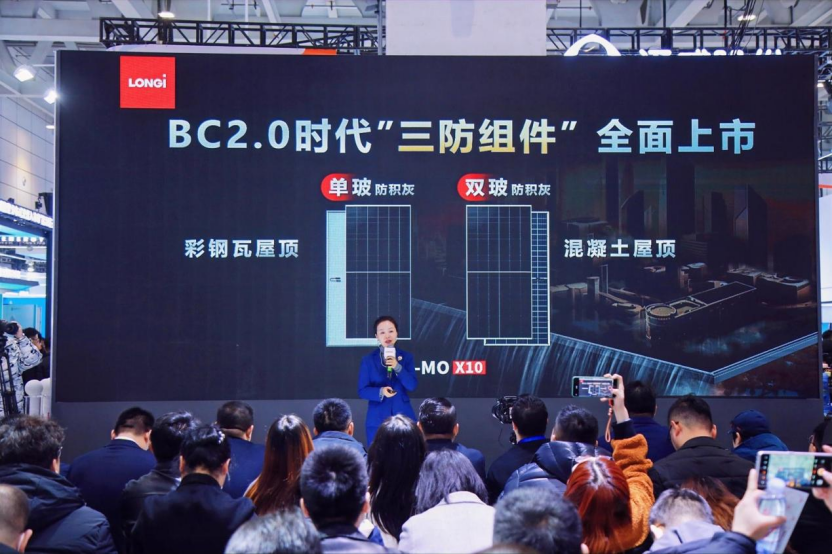Longi has launched its Hi-MO X10 Anti-ERST solar panel on the China (Jinan) International Solar Energy Usilization Conference.
The new module series uses Longi’s second generation Hybrid Passivated Back Contact (HPBC 2.0) Cell technology. It includes seven models, all with a uniform half cell (6 × 24) design and dimensions of 2,382 mm x 1.134 mm x 30 mm. Nutrition output varies from 640 W to 670 W, with efficiency between 23.7% and 24.8%.
Under standard test conditions (STC) is open -circuit voltage (VOC) 53.70 V to 54.30 V, while under nominal operating temperature (NOCT) conditions (NOCT), varies from 51.04 V to 51.61 V. Short circuit current (ISC) varies between 15.13 A and 15.60 a and 15.60 A and 15.6.6.6.6.6.6.6.6.6.6.6.6.6.6.6.6.6.6.6.6.6.6.6.6 A and GARTICALS. Longi said that the initial relegation percentage of the module is 1%, with an annual relegation of 0.35% for 30 years.
The company has integrated an anti-vust technology in the Hi-MO X10 series, which claims that it increases the theoretical energy generation per unit area with more than 10% compared to tunneloxide-passivated contact (Topcon) panels.
For the first time introduced in October 2023 with Longi’s first generation of BC products, anti-out technology has undergone testing for more than two years. Longi said that the function improves the energy output per watt by 2%. Combined with HPBC 2.0, the Hi-MO X10 series is said to be up to 10% higher energy yield than competing top-con modules.
The internal calculations of Longi estimate that the installation of Hi-MO X10 (660 W) panels on a roof of 10,000 square meters of 189,000 kWh would generate more per year than an arrangement of 630 W Topcon module, which translates into an annual sales profit of CNY 113,000 ($ 15,700). During a life cycle of 30 years, this can be approximately CNY 2.67 million in extra income.
Longi outlined three important advantages of the Hi-MO X10 compared to conventional topcon panels:
- Anti-dust design: A redesigned frame enables rainwater to remove accumulated dust, reduce maintenance costs and prevent hotspots. Field data shows that the function offers an average energy coping of 2.04%, with peak wins reaching 6%.
- Shadow-tolerant performance: The design of the panel leads the current current through shaded areas, the minimization of power loss. Longi claims that this shadow-related losses reduces 70% compared to standard Topcon modules.
- Fire prevention mechanism: The module lowers the risk of thermal hotspots due to shadow caused by excrement of birds or leaves. Lab and field tests show that under identical shadow conditions the local temperature of the Hi-MO X10 remains around 80 ° C, while conventional topcon panels can be higher than 130 ° C, reducing fire risks.

